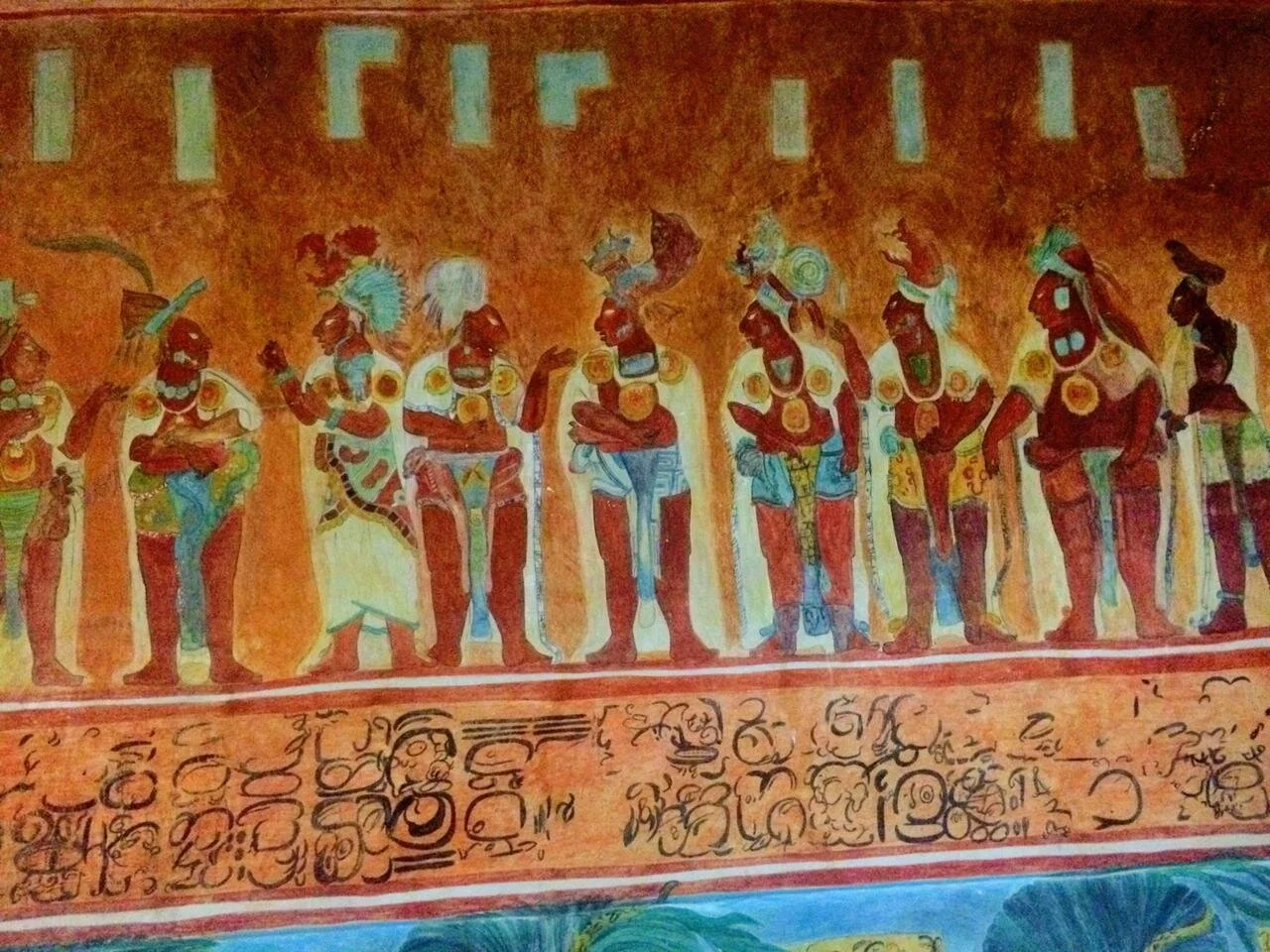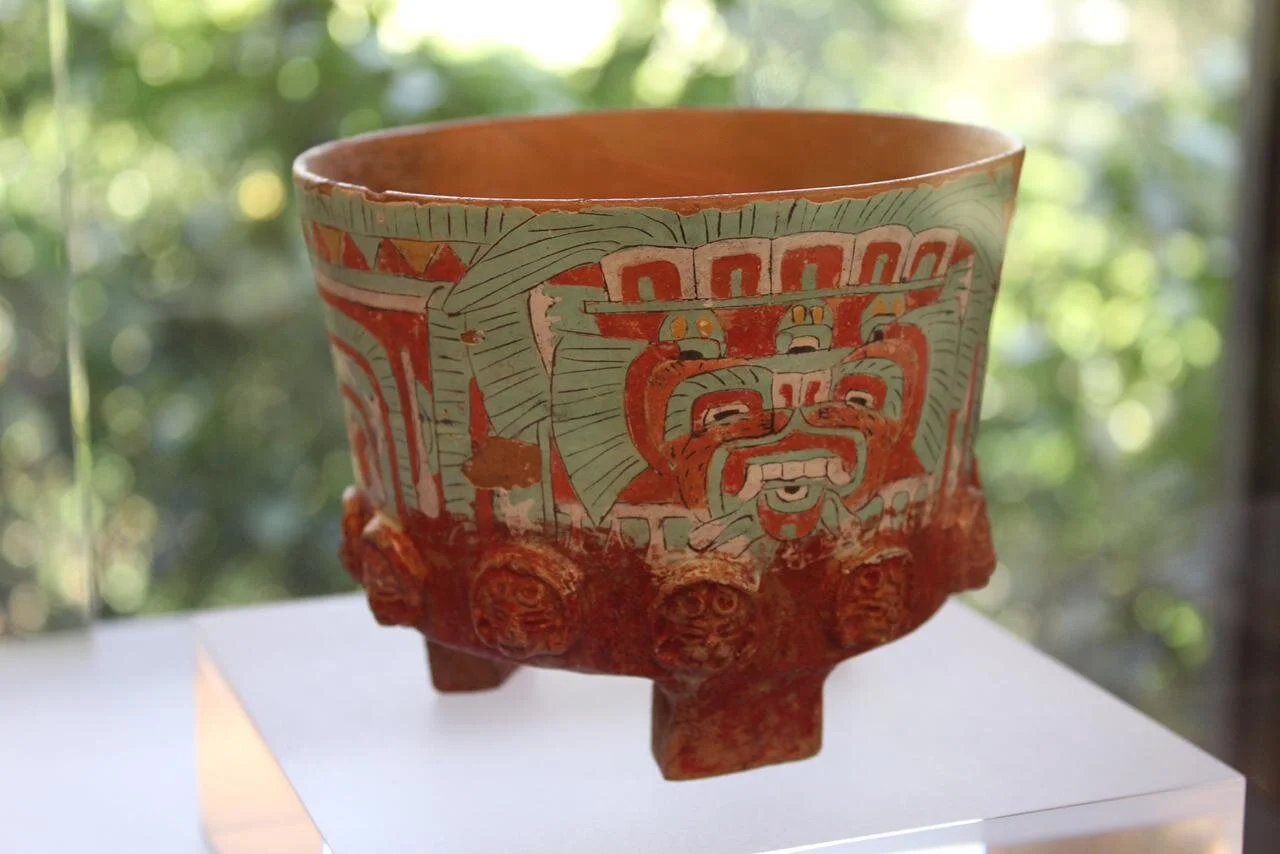Uncovering Ancient Technologies: The Mystery and Symbolism of Maya Blue
Reconstruction of the Bonampak Murals, National Museum of Anthropology, Mexico City © Rebecca Friedel, Heritage Education Network Belize
Vibrant and resilient, the Maya blue pigment has been considered a source of wonder for scientists and historians alike since its initial discovery in 1931. The color, which was first identified in the ruins of Chichén Itzá in Mexico’s Yucatán Peninsula, can be found throughout the sculptures, pottery, murals and other decorative art of the Mesoamerican region, and has come to characterise the civilisation that flourished across southern Mexico, Guatemala, and Belize between the 3rd and 10th centuries.
Cultural Significance
Depiction of Chaak (notice the long curved nose) patron deity of rain and agriculture. Bringing in the storm at Chichén Itzá, Mexico © Rebecca Friedel, Heritage Education Network Belize
The pigment has held an important symbolic value and ceremonial significance for the ancient Maya: blue was employed throughout Maya visual culture and religious ceremony to signify the god Chaak, their patron deity of rain and agriculture.
As in any agricultural society, rain was an essential resource for the Maya people. During times of seasonal drought, sacrifices —in the form of animals, objects, or people— were painted with a brilliant Maya blue and presented as offerings to Chaak, appeasing the god in exchange for rainfall and a bountiful harvest.
Ultra Resistant Pigment
Cao Modelled Cache Vessel, Santa Rita, Corozal, Belize © Sylvia Batty, Heritage Education Network Belize
While researchers have had a basic understanding of the color’s cultural significance and purpose for many years, the process through which the desired hue was produced has remained a mystery until recently. Of particular interest has been the pigment’s resistance to aging, weathering and even modern chemical solvents. The paint can retain its vibrant blue color across centuries- a feat that is uncommon for any color, especially those obtained from natural ingredients. Considering the harsh rainforest conditions of most Maya archaeological sites, this durability becomes all the more remarkable.
Since the 1960s, scientists have attributed the stability and enduring nature of Maya blue to a unique chemical bond found in the pigment between indigo, a dye extracted from the leaves of the indigo plant, and palygorskite, a type of clay mineral. Several studies have determined that the color can be recreated by combining a small amount of indigo dye with palygorskite and heating the mixture. Still, researchers have struggled to ascertain the exact process through which the Maya themselves could produce the pigment.
How the Maya Blue was Made?
Teotihuacán tripod vessel, Mexico © Rebecca Friedel, Heritage Education Network Belize – Teotihuacán blue, although similar to the color of Maya Blue, was produced differently. Teotihuacán blue and green pigments are mixtures of azurite and malachite with chrysocolla. Maya Blue was made from indigo leaves and palygorskite clay heated and effectively fused by burning copal incense.
More contemporary research, prompted by a re-examination of several artifacts found in Chichén Itzá’s Sacred Cenote (a natural well used for ceremonial offerings), suggests that the creation of Maya blue was a part of ritual practice and performance. During ceremonies honoring the rain deity Chaak, indigo leaves and palygorskite clay were heated and effectively fused by burning copal incense, a sacred glue-like substance derived from tree resin. All three of these natural ingredients have known medicinal purposes amongst Maya populations, and the ritual combination of the materials is thought to have had great symbolic healing power.
The modern resurfacing and re-examination of Maya blue instances using cutting-edge technologies help modern-day audiences develop a greater understanding of traditional Maya practices. For these ancient populations, Maya blue bore a great spiritual significance. For the modern world, its implications are similarly important; an artistic achievement undoubtedly ahead of its time, the story of Maya blue provides a clear example of the incredible unrealised technology of Mesoamerican societies.
Written by Tia Merotto
Tia studies Art History and English at the University of St Andrews, United Kingdom. Her work explores topics including folk art, pre-Columbian cultures and the anthropology of art.





